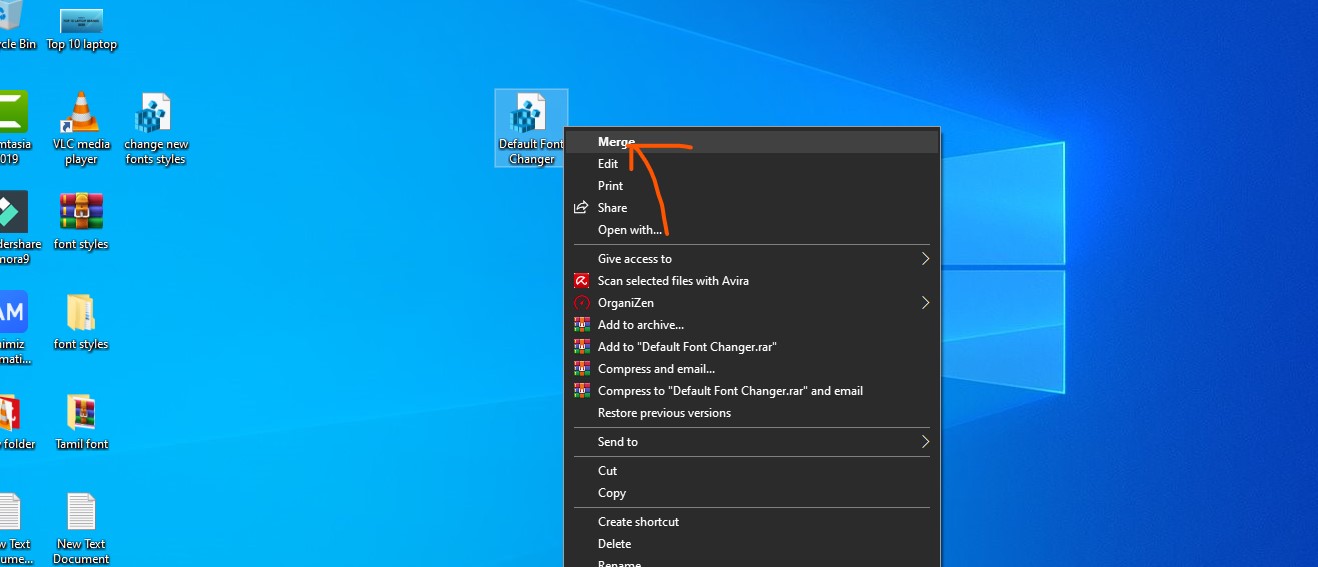

- How to change default font windows 10 manual#
- How to change default font windows 10 windows 10#
- How to change default font windows 10 Pc#
- How to change default font windows 10 windows 7#
To sign out, click on the user tile on the Start menu and then click Sign out. Once done, sign out of your account and then sign in again to see the new font in action. Please read the instructions in Step 4, Step 5, and Step 6 if you want to change the default font to a font other than Tahoma.Īnd if you want to set Tahoma as the default font in Windows 10, double-click on ChangeFont.reg file, click Yes when you see the confirmation dialog, and then click OK. Step 3: With default settings, this ChangeFont registry file changes the default Segoe UI font to Tahoma. Step 2: Right-click on the downloaded ChangeFont.zip file, click Extract all, select a location, and then click the Extract button to get a file named ChangeFont.reg. Please note that the credit for the workaround and registry file goes to Tom at Super User. Step 1: Download ChangeFont.zip file by clicking here.

We also recommend you create a system image backup before making major changes to the Registry.
How to change default font windows 10 manual#
WARNING: Since this method requires editing the Registry, we recommend you create a manual system restore point before proceeding further.
How to change default font windows 10 windows 10#
Set your favorite font as the default font in Windows 10

You need to download a Registry file and then merge it with Registry. Complete the given below directions to change the default font in Windows 10. Surprisingly, no developer has come up with an application to change the default font so far.Ī user at Super User has posted a workaround to change the default font in Windows 10 to a font of your choice. There is no option under Control Panel or Settings app to change the default font.
How to change default font windows 10 windows 7#
Unlike Windows 7 and earlier versions, changing the default font is not an easy job in Windows 10, thanks to the absence of Window Color and Appearance.
How to change default font windows 10 Pc#
The best place to do this is still in that form's constructor, starting with the form's font as a base and modifying the style from it: m圜ontrol.Font = New Font(Me.Font, FontStyle.Many PC users who have used Windows XP for a long time before switching to Windows 10 feel that the Windows XP’s default Tahoma font was superior, and want to set Tahoma or any other font as the default font in Windows 10. The only problem that remains with this approach is if you want to set a font style for a particular control, such as bold. to fix bugs in the WinForms implementation. I use this in a couple of different ways such as p/invoking, etc. Using the correct font at design time solves the problem Josuegomes points out, because any container control that is created on the form will pick up the font used by the form at design-time.īesides the above advantages, this frees you from having to remember to modify the constructor for each form that you create and ensures consistency across all of the forms in your application, as well as giving you a place to put other common functionality. This not only ensures that your application picks up the correct font at run-time, based on the user's environment (heading off the potential problem posed by Hans Passant-an XP without Office 2007 will resort to Microsoft Sans Serif in the absence of Segoe UI), but also gives you design-time support for your current Windows font. Some of the other answers propose solid workarounds, but I've found that the best solution really is to create a base form that all of the forms in your application inherit from and set this base form's Font property to SystemFonts.MessageBoxFont in the constructor. The accepted answer doesn't really answer the question it just explains why this behavior is occurring.


 0 kommentar(er)
0 kommentar(er)
